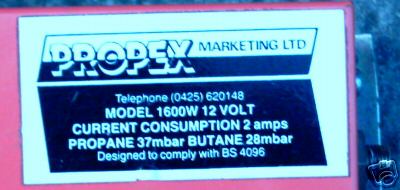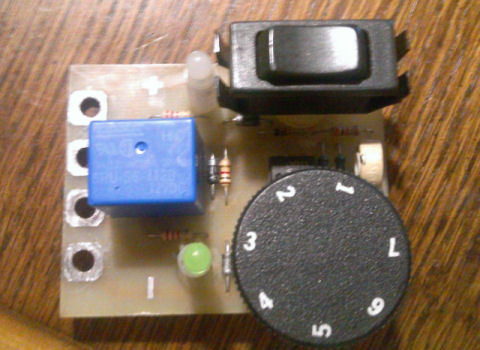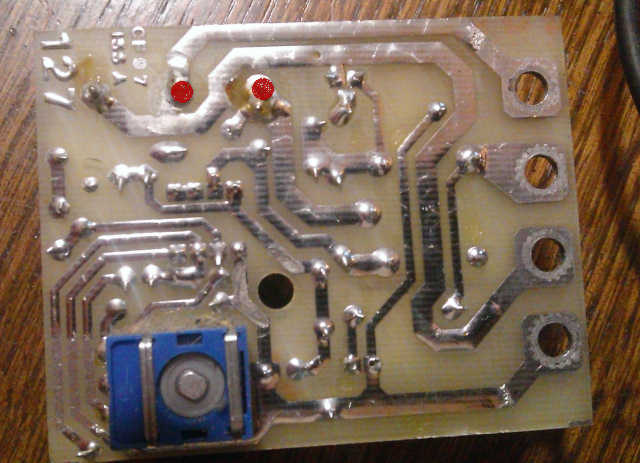Camping Interior Propex
Specifications
1.8 KW Propex
ECONOMY
These are the specs for a modern Propex:
Gas consumption for a Propex Space Heater HS2000 - Single outlet - 12 volt (calculated on a continuous running basis) as follows :-
Average gas consumption 128grams/hour
3.9kg propane cylinder 30.5hrs
4.5kg butane 35.0hrs
TECHNICAL SPECIFICATIONS
Heat input 1.8KW
Heat output 1.6KW
Voltage 12V or 24V
Current consumption 1.2A cont. running
Air throughput 50 C.F.M.
Propex support info: http://www.propexheatsource.co.uk/support
Propex 1600 Compact: http://www.propexheatsource.co.uk/pdf/compact
Contact Propex
Hard Starting
Anon: Unfortunately, it refused to light. I could hear the sound of the ignition trying to fire up but no warm air. Everything else works fine i.e. the fridge and the hob but not my heater. Are they dependent on gas pressure as I am unsure of the amount of gas left in the bottle? Any ideas before I freeze to death?
Hacksawbob Propex won't light if pressure is too low, get a refill and try again. Also if your running blue bottle (butane) this doesn't like the cold so wont light. ( Only solution is to warm the bottle (I've heard of people taking it into the shower with them on campsites!) or upgrade to propane (red bottles) you'll need to change the regulator too. I have an autohomes and the red bottle wont stand up in the cupboard so lie it down when not in use and secure it some how for driving.
Aidan: Modern version needs to be used regularly 'cos there's a secondary passive fan with an optical sensor in the air flow to check the flow is as required, part of interlock for CE approval that old ones didn't have apparantly. If not used the bearing grease in the passive fan goes a bit thick and so when the blower notor blows the fan doesn't spin fast enough to activate the optical sensor so locks out.
I phoned Propex when this happened to me and the advice was take an airline with nozzle on and blow through the external pipes in the inlet which will spin up the passive fan, after about thirty secs the grease will be redispersed and the thing will then light ok when you go through the normal start. Worked fine for me, I used an old sock to seal the inlet end with the air line blower attachment.
Top tip from Propex (and it's in the manual) is run the heater every month, even in the summer just to keep it free running and ready to light when you really need it.
Propex will not fire up
The Propex heater supply line MUST be up to the job. Inadequate cable can cause voltage drop and the heater will either not fire up or will not run for long. Blue bottles may not operate if very cold. Red (Propane) bottles are recommended as these are not subject to freezing.
Adjusting Sensitivity
The Adjuster preset is a hysteresis control which can alter the temperature differential from 4°C to 1/2°C.
To adjust the thermostat, first pull the dial knob off and remove case by undoing the screw beneath the knob. The diagram overleaf shows the position of the adjuster. For maximum sensitivity turn the preset fully anticlockwise, and for minimum sensitivity turn it clockwise. The preset is designed to be adjusted using a small screwdriver. There is a small arrow in the centre to show which way it is adjusted. The preset is not a linear control and most of the adjustment is toward the anticlockwise endstop.
Remote Controlled Propex
Penned by Covkid
A remote control for your Propex is often very handy. Perfect for those days when you're knee-deep in snow or your locks are frozen solid or you want to defrost and not have to scrape windows like everyone else. It works from indoors so no more trips out in the cold to turn it on!
You can trigger the 'heating on' circuit in various ways, ie via a tracker and other phone-based systems but then you may be paying to switch your heater on then. This project used an RF remote control transmitter (rather than infra-red) and is fine for most purposes.
Heres the remote kit type I used (under a fiver): http://www.ebay.co.uk/sch/i.html?_from=R40&_trksid=p2047675.m570.l1313.TR0.TRC0.H0&_nkw=12V+10A+Relay+2CH+Wireless+RF+Remote+Control&_sacat=0 - Single or dual channel is all you need unless you want to control lots of things remotely. It should be rated for at least 10 amps.
Here's thermostat board removed from its case. Its a very simple affair - a thermostatic control and a relay to switch the heater/fan load. It is operated manually by a rocker switch and dial with LED indicators to show present mode of operation. There are two models I know of - this just happens to be mine but principals apply to both, and you could do the same to any electrically switched heater up to 10amp load (Propex is about 2amp):
You'll need to solder a two-core cable off to remote receiver (solder points shown here with red spots):
This new cable goes to load side of relay on remote receiver. Essentially all you're doing is creating a mirror copy of the rocker switch only now operated by remote - make/break. Wired this way, when you switch off at remote controlled fob, heater will still go through its normal cool-down cycle (important). The only other cable that needs to go to remote receiver is 12v +- to provide power, which you can either take from thermostat itself or another 12v point nearby.
Bear in mind, if you have manually switched heater on (ie via rocker switch), the remote receiver will click away but it will have no effect on heater. The rocker will always overide the remote function. Remote will only work if rocker is in mid-position (ie switched off at thermostat). I'll be stating the obvious to some, but best explained.
If your thermostat looks different to mine, with the board out, just put a meter between middle and outer terminals on back of board and check for continuity when you switch to 'heater on'. Then you know which outer terminal is one you want. Whichever has continuity is the correct side. With it switched the other way, you'll get fan only ofcourse. If this has lost you already, please don't attempt it - get someone who knows what they're doing.
It seems to work over quite a distance - certainly from indoors. Worked ok from the opposite side of the house.
I ran long cable (initially) to remote receiver so I could test which position will be best to mount it for optimimum range via remote but window level is ideal.
Thoughts: Rather than solder to thermostat switch, you could in fact (if you follow circuit tracks - simply connect one of the wires at screw terminals but it can get a bit cramped then. The perfect solution would be to remount thermostat board inside a slightly bigger vented project box and install a seperate choc-bloc arrangement inside to allow for more wires. You could then mount remote receiver in same case making it all self-contained.
You'd also need an extension for potentiometer as stock knob sits below level of rocker switch. Case must be vented remember or it won't sense interior temperature!
With a slightly larger case the back of the stock thermostat case (board is screwed to this) could simply be mounted inside new case, then take the four board terminals to a new termination block into which you can run all external wires. Draw a map for reference.
The 'heater on' LED in the thermostat case could be extended so you have something more prominent and therefore easy to see at a distance, that heater is actually on although a far better idea would be to have an LED that is triggered by the remote receiver only. Maplins do what they call an alarm LED - basically a flashing red LED that you can run direct to any 12v source. I strongly advise you DO have a visual indicator otherwise you'll be forever wondering if its on or not - and ideally (as I said) only operated from remote unit. You may not want a flashing LED when you're under the duvet...
Forum links
Propex Burn-out (check your earths!): http://forum.club8090.co.uk/viewtopic.php?f=39&t=138206
Search Tech Questions or Tech Archive
See club website - 'Other stuff' for manuals


